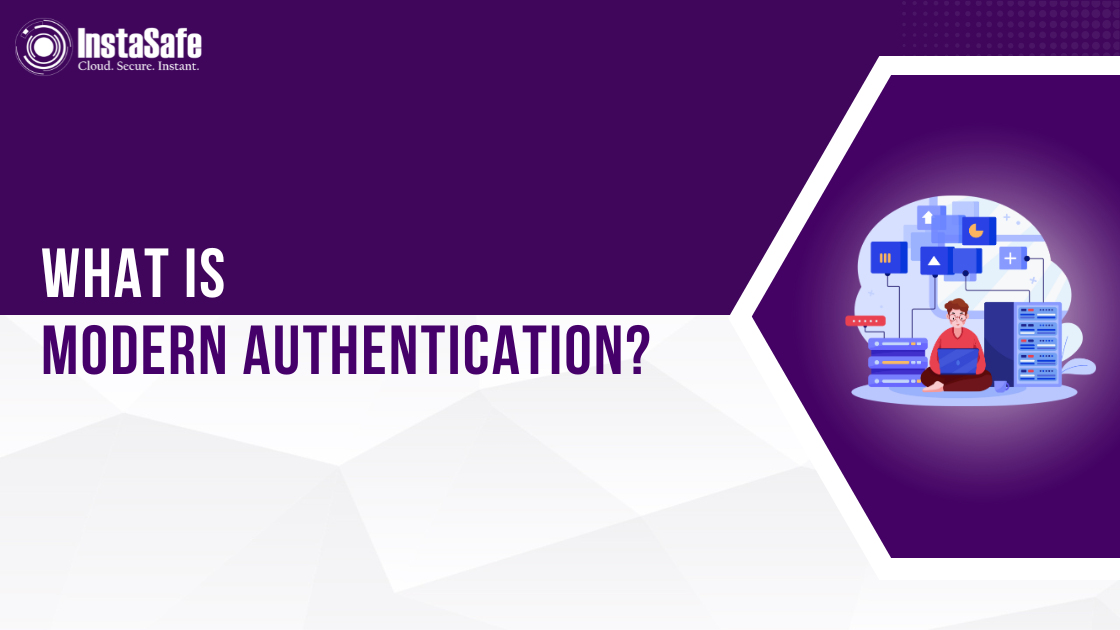What is Modern Authentication?

The way we verify user identities has evolved dramatically. Modern authentication represents a significant shift from traditional methods, offering more secure and flexible approaches to identity verification across various platforms and devices. But what exactly is modern authentication, and why has it become so crucial for organisations worldwide?
What is Modern Authentication?
Modern authentication is a method of verifying users' identities through multiple factors and protocols specifically designed for internet-scale applications. Unlike traditional methods of authentication that use passwords in closed networks, modern auth leverages advanced protocols and techniques to protect resources in increasingly complex environments.
The term modern authentication generally refers to authentication systems that:
- Separate identity providers (IdPs) from service providers (SPs).
- Use standards-based protocols for secure communication.
- Support multi-factor verification.
- Enable adaptive and context-aware security policies.
Key Components of Modern Authentication
Multi-Factor Authentication (MFA)
MFA is an important part of modern identification because it needs users to provide more than two different types of proof:
- Something you know (password, PIN, recovery code)
- Something you are (fingerprints or facial recognition)
- Something you have (security key, mobile device, CAC card)
Modern identification requires more than one factor, which makes it much less likely that someone will get in without permission, even if one factor is lost or stolen. According to security experts in the US, properly implemented MFA can prevent over 99% of account compromise attacks.
Passwordless Authentication
Modern authentication increasingly moves beyond passwords altogether. Passwordless authentication leverages:
- Hardware security keys
- Biometric verification
- Mobile device authentication
- Certificate-based authentication
As organisations implement modern authentication methods, many are finding that eliminating passwords reduces both security risks and user frustration.
Adaptive Authentication
A sophisticated component of modern authentication is adaptive or risk-based authentication, which assesses contextual factors:
- User location and device
- Time of access and behavioural patterns
- Network characteristics
- Sensitivity of requested resources
Using AI and machine learning, modern authentication systems can dynamically adjust security requirements based on risk levels, requiring additional verification only when necessary.
Single Sign-On (SSO)
Another important part of modern security is single sign-on (SSO) technology, which lets users log in once and then use their passwords in multiple apps without having to enter them again. This makes things easier for users while keeping all linked devices safe. The modern authentication workflow with SSO typically follows this pattern:
- The user requests access to a service provider.
- The provider generates a token and sends an authentication request to the identity provider.
- The identity provider verifies the user's identity through modern authentication methods.
- Once the individual has been verified, they can access all authorised tools.
Key Protocols Supporting Modern Authentication
Several protocols form the foundation of modern authentication solutions:
OAuth 2.0
While technically an authorisation framework rather than an authentication protocol, OAuth is widely used in modern authentication implementations. It lets applications access resources for users without having to share their login information.
OpenID Connect (OIDC)
Built on top of OAuth 2.0, OIDC adds a standardised identity layer. As part of modern authentication architecture, OIDC facilitates authentication across cloud services and applications.
Security Assertion Markup Language (SAML)
SAML enables the secure exchange of authentication data between identity providers and service providers. As a key modern authentication protocol, SAML facilitates federation across security domains.
Conditional Access in Modern Authentication
Modern authentication systems implement conditional access policies that evaluate multiple factors before granting resource access:
- User identity verification status
- Device health and compliance
- Location and network security
- Application sensitivity
- Time-based restrictions
These context-aware policies enable zero-trust security models where nothing is trusted by default, and everything must be verified — a core principle of modern authentication.
Benefits of Implementing Modern Authentication
Organisations adopting modern authentication experience several advantages:
- Enhanced security through multiple verification layers.
- Improved user experience with fewer password prompts.
- Support for remote work across various devices and locations.
- Centralised management of authentication policies.
- Better compliance with data protection regulations.
- Protection against sophisticated attack methods.
Modern authentication methods rely on multiple authentication factors, robust authorisation protocols and conditional security policies to granularly assess users' claims that they are who they say they are."
Challenges in Modern Authentication Implementation
Despite its benefits, implementing modern authentication presents challenges:
- Legacy system compatibility issues.
- User adoption and education requirements.
- Integration complexity across diverse applications.
- Balancing security with usability.
- Supporting multiple authentication protocols simultaneously.
Organisations must carefully plan their transition to modern authentication, ensuring that all systems and applications can support the required protocols.
Modern Authentication in Zero Trust Architectures
Modern authentication serves as a cornerstone of zero-trust security frameworks. Under Zero Trust principles, no user or device is implicitly trusted, regardless of location or network connection. Modern authentication methods provide the continuous verification necessary for zero-trust implementation.
Conclusion
Modern authentication represents a significant advancement in how organisations verify identities and secure digital resources. By moving beyond simple passwords to embrace multi-factor, adaptive and context-aware approaches, modern authentication provides the foundation for secure access in the complex digital landscape.
At InstaSafe, we have revolutionised multi-factor authentication for modern security challenges. Experience enhanced protection with adaptive policies that adjust based on risk factors—all while maintaining a frictionless user experience that eliminates password fatigue across your organisation.
Frequently Asked Questions (FAQs)
- What are the three main types of authentication?
Knowledge factors (passwords), possession factors (security tokens) and inherence factors (biometrics). Modern authentication methods often combine these for stronger security.
- What is the difference between modern and basic authentication?
Basic authentication uses simple username/passwords. Modern authentication protocols use tokens, do not transmit passwords repeatedly and support multi-factor verification through standardised modern authentication methods.
- Which authentication type is better?
Modern authentication is better, offering enhanced security through temporary tokens. Modern authentication protocols like OAuth and SAML provide better protection against common attacks while improving user experience.
